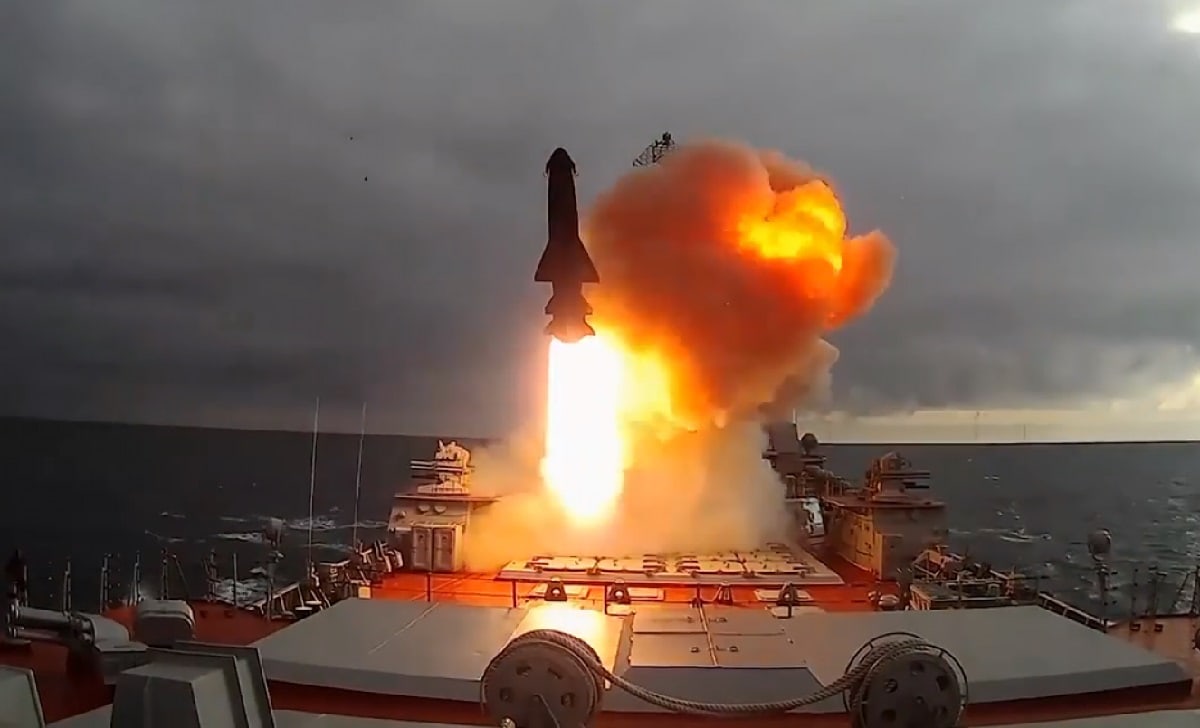Russian Federation President Vladimir Putin has touted the capabilities of the Tsirkon hypersonic missile, which he has proclaimed can hit any land or naval target while being launched from a ship or submarine. The Tsirkon has a reported range of 1,000 kilometers (620 miles) and could reach speeds upwards of Mach 9.
Over the weekend, Russian authorities announced that the Tsirkon will soon be deployed on an active-duty warship, the Admiral Gorshkov-class Project 22350 frigate Admiral Golovko.
“It is planned that Admiral Golovko will become the first standard carrier of Tsirkons,” a Russian defense industry source told Tass on Saturday.
The Admiral Golovko is the third Project 22350 frigate constructed in Russia. She was laid on February 1, 2012, and floated out on May 22, 2020. Two additional boats of the class, the lead vessel Admiral of the Soviet Fleet Gorshkov and the Admiral Kasatonov are already operational, while another six frigates of the class are currently under construction.
Admiral Gorshkov, which is currently in service with the Russian Navy’s Northern Fleet, has conducted multiple test-firings of the Tsirkon missile in the past year. The frigate had already been quite notable for making a round-the-world voyage in 2019, which was recognized as a major achievement and was even entered into the Record Book of the Russian Armed Forces.
Small Yet Capable Warships
The Project 22350 guided missile frigates were initially designated to fight submarines and warships in oceans and seas, as well as to repel air attacks both independently and within formations. As Russia has attempted to modernize its navy with smaller yet more capable warships, the Admiral Gorshkov-class could prove vital in being the vanguard against potential threats, both in near-shore defense of the motherland and in distant waters.
The hull of the frigates is flush-decked; featuring three island superstructures, one mast turret and one steel funnel. Stealth technologies were utilized in the construction of the warship to make them practically invisible to the radars of a potential adversary. The main armament consists of two 16-cell universal vertical launchers 3S-14 for Kalibr missiles.
Full displacement is 5,000 tons, the length is 135 meters. The ships’ diesel gas-turbine power plant has a capacity of 65000 horsepower, enabling a top speed of 29 knots. The crew comprises over 170 men, while the warships can carry Ka-27 helicopters or similar rotary aircraft.
“Project 22350 frigates are set to become the backbone of the Russian Navy’s surface groupings soon,” Andrei Dyachkov, CEO of the Severnoye Design Bureau, which is part of the United Shipbuilding Corporation, had told state media earlier this year. “Work on six warships of this series is currently underway.”
Unlike past Russian warships, which have been slow to arrive, the Project 22350 frigates are reportedly being serial-produced today.
Peter Suciu is a Michigan-based writer who has contributed to more than four dozen magazines, newspapers and websites. He regularly writes about military small arms, and is the author of several books on military headgear including A Gallery of Military Headdress, which is available on Amazon.com.

